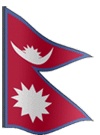Malaria control project in Nepal was first initiated in 1954 with the support from USAID (the then USOM), with the objective of controlling malaria, mainly in plain region (Terai belt) of central Nepal. In 1958, national malaria eradication program was launched with the objective of eradicating malaria from the country. Due to various reasons the eradication concept reverted to control program in 1978. Following the call of WHO to revamp the malaria control programs in 1998, Roll Back Malaria (RBM) initiative was launched to control malaria transmission in hard-core forests, foot-hills, inner-Terai and hill river valleys, which accounted for more than 70% of the total malaria cases in the country. The high risk of acquiring the disease is attributed to the abundance of vector mosquitoes, mobile and vulnerable population, relative inaccessibility of the area, suitable temperature, environmental and socio-economic factors. The recent micro-stratification, based on number of malaria cases, geo-ecology, vector breeding and vulnerability due to migration and population movements, further narrowed down the essentials to VDC level risks as compared to earlier district as units of risks. It has clearly shown that only 54 VDC’s are at high risk, 201 VDC’s at moderate risk and 999 VDC’s at low risk.
Based on the micro-stratification report 2013, approximately 13.02 million population (47.9%) live in malaria endemic areas (VDCS); out of which ~1 million (3.62%) live in high risk VDCs, 2.66 million (9.8%) live in moderate risk VDCs, and 9.38 million(34.52%) live in low risk VDCs. A total population of 14.13 (52.1%) is estimated to live in VDCs where there is no malaria transmission. The high risk areas consist of foothills with river belts, forest fringe areas in terai, hill river valleys, and inner terai areas. Low risk VDCs lie in plain cultivated outer Terai, mountain, and valleys in the mountains.
The goals of the programmes are follows:
Vision: Malaria-free Nepal in 2025
Mission: To empower the health staff and the communities at risk of malaria to contribute towards the vision of malaria-free Nepal in 2026.
Goals:
- To sustain zero death due to malaria from 2012 onwards;
- To reduce the incidence of indigenous malaria cases by 90% by 2018 (relative to 2012);
- To reduce no. of VDCs having indigenous malaria cases by 70% by 2018 (relative to 2012);
- To receive WHO certification of malaria free status by 2025
Programme Implemented by:
Disease Control Section
Epidemiology and Disease Control Division
Department of Health Services (DoHS)
Teku, Kathmandu
T : 01-4255796
F : 01-4262268



